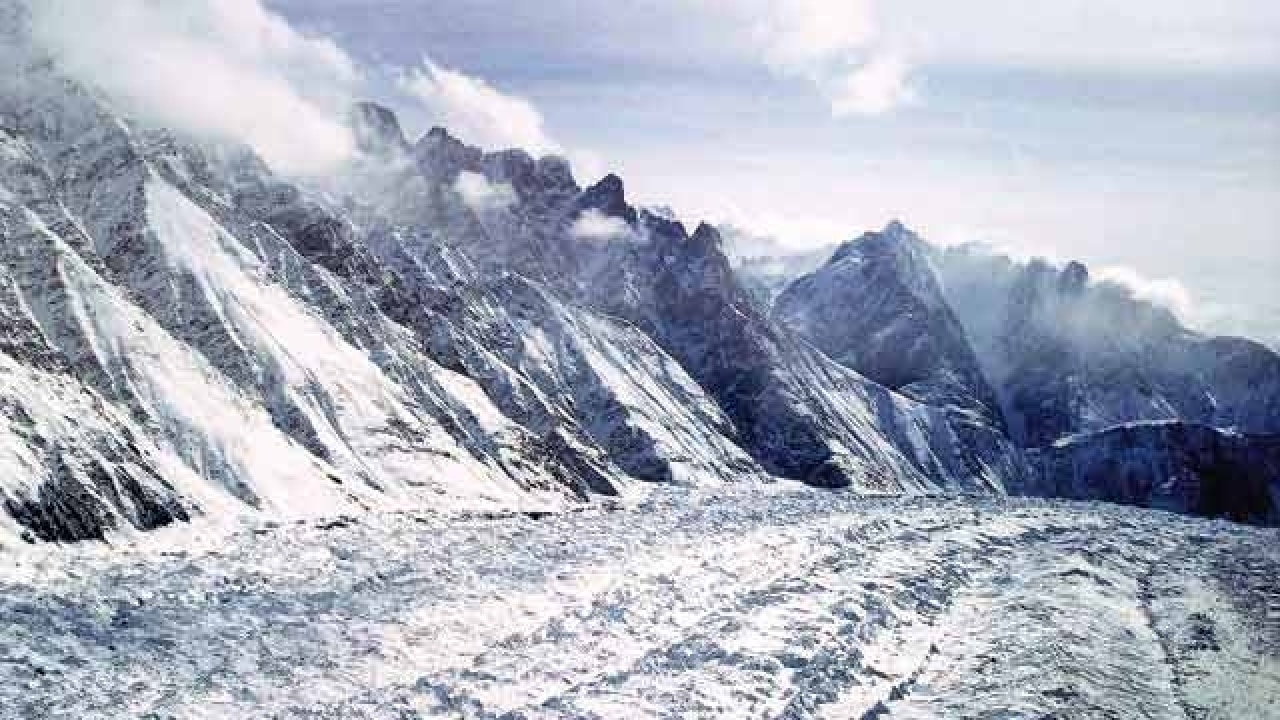
Ten Indian Army soldiers were killed when a massive avalanche struck their post in a tragic event at Siachen glacier, the world’s highest battlefield on Wednesday, February 3. Earth moving equipment and snow cutters could not reach the one JCO and nine jawans of the 19th Madras battalion before they made the ultimate sacrifice defending their nation. Every year, many soldiers lose their life on both sides. In 2011, 24 Indian soldiers died due to climatic conditions and related accidents. In April 2012, Pakistan lost 140 personnel when an avalanche hit one military sector Head Quarter. It is time to re-visit the very difficult conditions Indian soldiers brave at these posts on the Actual Ground Position Line (AGPL) with Pakistan.
Militarised since early 1984, Indian troops sit at vantage points on the Saltoro ridge vis-à-vis their Pakistan counterparts on its west, but holding high ground involves great sacrifice of life and limb.The word Siachen means a land with an abundance of roses. It is an irony that it is currently the most hazardous battlefield in the world. At 76 km long Siachen is the longest glacier in Karakoram and second-longest in the world’s non-polar regions. High points on Saltoro ridge dividing the two sides—India and Pakistan—go up to 25,330 feet which see minus 50-degree temperatures and nearly 35 feet of average winter snowfall. At these heights oxygen levels are just 10% of that in the plains. Soldiers lose appetite and weight, and sleep disorders and memory loss are common. Snowstorms in Siachen can last three weeks. Winds here can cross the 100 mph without warning. An orange can freeze to the hardness of a cricket ball in no time.
Incomplete demarcation of the territory north of survey point NJ9842 near Siachen led to differences in interpretation and the conflict. Even the 1949 Karachi agreement and 1972 Shimla agreements between the two sides did not envisage dispute over such cold barren region. When Pakistan ceded Shaksgam valley to China in 1963 and, in the 1970s, started clearing foreign mountaineering expeditions to Saltoro ridge peaks, implying claim, India got concerned. Legendary Indian mountaineer Colonel Narendra Kumar of Army’s High Altitude Warfare School led well-published expeditions to the region, prompting Pakistani Generals to become ambitious and make plans to secure their foothold over Siachen. Pakistan started shopping arctic-weather gear in Europe. Triggered by intelligence inputs, Indian Army pre-empted and occupied crucial Bilafond La and Sia La passes by mid-April 1984. Called Op Meghdoot India gained control over the entire glacier and the ridge. There has been a cease-fire since 2003. Both sides deploy nearly 3,000 troops. Indian Army sits at much higher altitude and, therefore, has lost 846 compared to 213 Pakistani casualties. General Musharraf in his memoirs conceded that Pakistan lost 2300 sq. km of the territory it had once claimed.
Nearly 95% of the lives lost have been due to frostbites and avalanches. India reportedly spends nearly US$ 300 million a year to maintain these troops. India operates the world’s highest helipad at Point Sonam at 21,000 feet. It also has the world’s highest telephone booth in the glacier. High altitude posts are reinforced through Heli-lift of logistics. President Abdul Kalam’s visit of 2007 and more recently PM Modi celebrating Diwali with troops in October 2014 greatly boosted their morale.
To sustain a large number of troops, about 6000 tonnes of load is flown to the Siachen glacier every year. An almost equal amount is para-dropped. IAF's AN-32 aircraft and helicopters serve as a 'lifeline' for the Northern Sector. Leh and Thoise airfields receive IL-76 aircraft loads and Mi-17 helicopters move supplies to base camp. Helicopter pilots fly hazardous missions to helipads to deliver precious supplies and rescue injured soldiers. Transporting kerosene is one major expense. Since 2011, India has a 250-km long kerosene pipeline in the glacier. A few places have a pulley system to hoist supplies up the mountainsides. Some Indian soldiers live in igloos made of fiber glass panels. Washing clothing is not possible. Hence, 15 pairs of thermal socks are given per individual for a 90-day stay. Troops huddle around small kerosene stoves. After just a 100 strides, even a well-conditioned man gasps for breath. Sweat becomes ice in a soldier's gloves and socks resulting in frostbite.
Once virgin, Nubra valley is now punctuated with barracks, helipads, supply sheds, satellite dishes, a hospital and few Hindu shrines.The nearest civilian settlement is the village Warshi, 10 miles south of the base camp. The use of arms and ammunition has considerably affected the ecosystem. Dumping of non- biodegradable waste has been an issue. Siachen glacier has also been retreating for the past 30 years. At around 110 meters a year, it has decreased by almost 35%. In response, the Indian Army is running a "Green Siachen, Clean Siachen" campaign to airlift the garbage from the glacier. The areas east and west of the Siachen region have already been declared national parks.
Operations here are complex. The highest posts are occupied by only a handful of soldiers. Night sentry duty is painfully tough. The enemy is hard to see in the vast whiteness. Rifles need thawing repeatedly over kerosene stoves. A misstep could land one in 200-feet deep snow-covered crevasses. Military pilots literally push their helicopters well beyond their optimal performance daily.
Siachen cannot be vacated because some Pakistani General would order its re-occupation. Here, names of martyrs are etched on a stone memorial at the base camp. The inscription reads: "Quartered in snow, silent to remain. When the bugle calls, they shall rise and march again." Every soldier in Siachen has to be a superhero and these brave men deserve our salute.